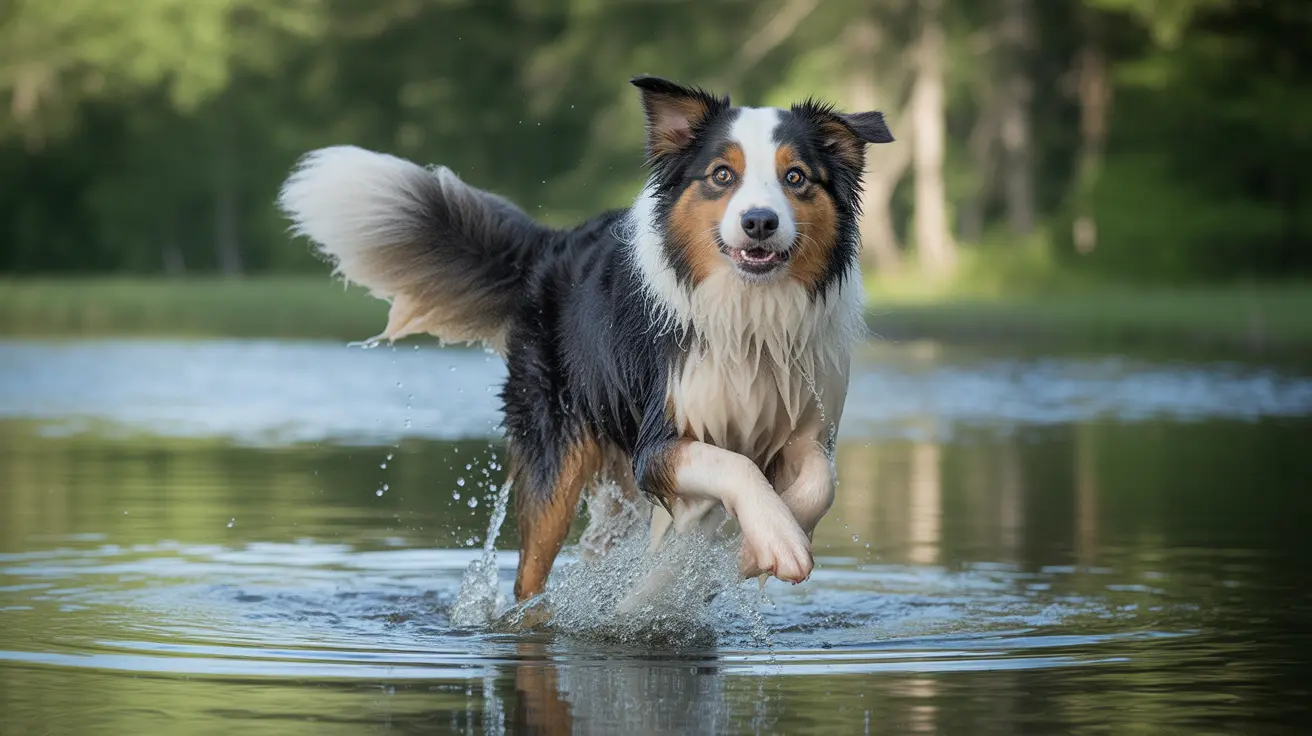If you've ever watched a dog shake vigorously, whether wet or completely dry, you've witnessed one of the most fascinating and multi-purpose behaviors in the canine world. This seemingly simple action, known as the "shake-off," serves far more functions than just drying wet fur. Let's explore the science, purpose, and meaning behind this instinctive dog behavior.
The Science Behind the Shake-Off
Dogs have perfected the art of shaking with remarkable efficiency. Research shows that dogs can remove approximately 70% of water from their fur in just four seconds through their signature shake. During this motion, their loose skin oscillates at an impressive rate - up to 20 times faster than their backbone movement.
This powerful mechanism isn't just random movement. It's an evolutionary adaptation that helps dogs maintain proper body temperature and prevent hypothermia, especially after getting wet. The frequency of their shake is precisely tuned to their size, with smaller dogs shaking more rapidly than larger ones to achieve optimal water removal.
Emotional and Behavioral Significance
Stress Relief and Emotional Reset
When you see your dog shake off while completely dry, they're likely using this behavior as an emotional release mechanism. Dogs often shake off after stressful situations, such as:
- Meeting new dogs or people
- After veterinary examinations
- Following tense social interactions
- During or after training sessions
This action serves as a natural "reset button" for their emotional state, helping them transition from one situation or mood to another.
Physical Comfort and Body Awareness
Dogs also shake off to:
- Adjust their body awareness after waking up
- Release physical tension
- Rid themselves of minor irritants like debris or static
- Resettle their fur and skin after wearing equipment like harnesses or clothing
Medical and Health Considerations
While most shake-offs are perfectly normal, it's important to distinguish between typical shaking behavior and potential health concerns. Regular shake-offs are voluntary and purposeful, but excessive or unusual shaking might indicate:
- Ear infections
- Skin irritations
- Neurological issues
- Anxiety or stress disorders
- Physical discomfort or pain
Social Communication Among Dogs
The shake-off serves as a vital communication tool in canine social interactions. Dogs often use this behavior to signal the end of play sessions or to diffuse tense situations. It's fascinating to observe how two dogs might shake off simultaneously after playing, effectively communicating their mutual agreement to take a break.
Frequently Asked Questions
Why do dogs shake off even when they aren't wet?
Dogs shake off when dry to release tension, transition between activities, reset their emotional state, or remove physical discomfort. It's a natural stress-relief mechanism and way to recalibrate their body awareness.
How does shaking help dogs dry off so quickly after swimming or a bath?
Dogs can remove up to 70% of water from their fur in just four seconds through rapid oscillation of their loose skin. This efficient mechanism helps them maintain body temperature and prevent hypothermia.
Can a dog's shake-off indicate stress, anxiety, or discomfort?
Yes, dogs often use the shake-off as a calming signal when stressed or anxious. It can indicate emotional discomfort, overwhelming situations, or a need to reset after tense interactions.
When should I be concerned about my dog shaking excessively or abnormally?
Consult a veterinarian if your dog shows unusual shaking patterns, particularly if accompanied by other symptoms or if the shaking seems involuntary or constant. This could indicate medical issues requiring attention.
How can I minimize mess when my dog shakes off after getting wet?
To reduce splash zones after baths or swimming, thoroughly towel dry your dog first and ensure they're in an easy-to-clean area before allowing them to shake. Consider teaching them to shake on command in a designated space.
Understanding your dog's shake-off behavior helps you better interpret their needs and emotional state. While this natural action serves many important purposes, being able to distinguish between normal and concerning shaking patterns is crucial for maintaining your pet's health and well-being.






